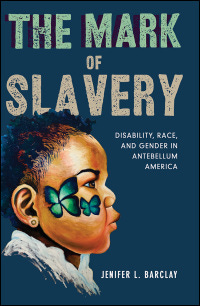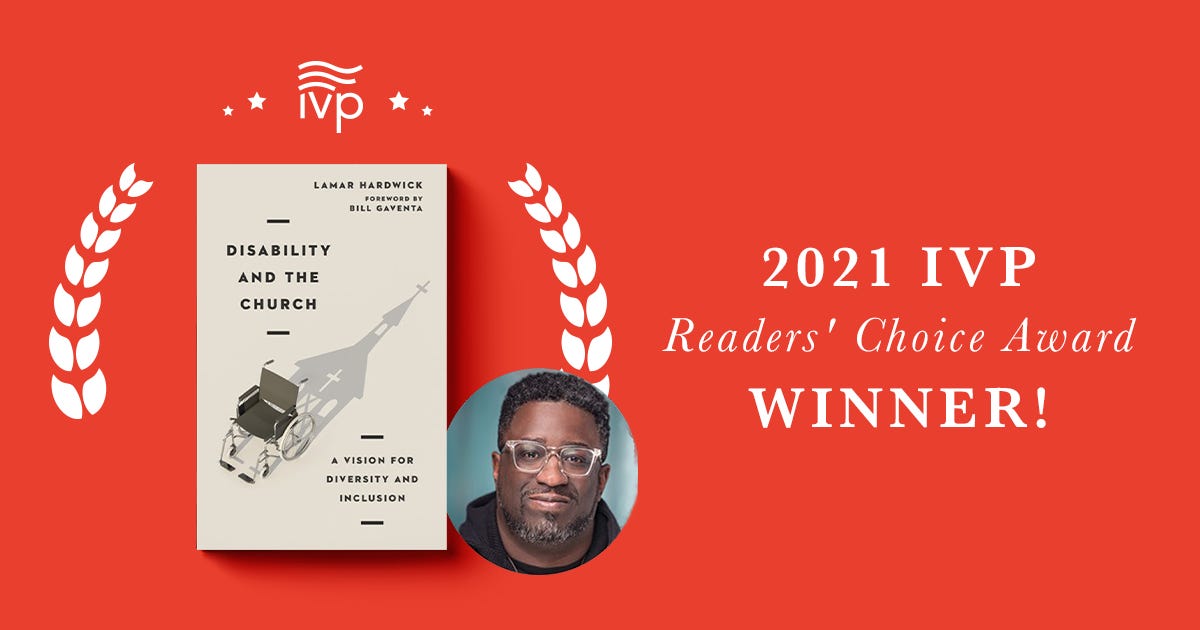The next few months will be a busy time for me. In addition to my duties as a pastor, I am now also a Ph.D. student at Union Institute and University in Cincinnati Ohio. Among the many reasons, I choose UI&U was the Martin Luther King Jr. Legacy Studies Specialization. In addition to focusing my studies on ethics, I am excited to engage in studying the legacy and philosophy of Dr. King, particularly as it relates to the role and influence of religion in issues of social inequities. For me, that means researching the intersection of disability, race, and religion.
Even prior to enrolling at UI&I, I was beginning independent research into this area. Over the last year, I’ve had the privilege of sharing my research through consulting and conferences across the country. (I’ll be sharing more about where I’ll be speaking this spring in my post next week).
If you’re looking to better understand the link between disability and race, a great book to read is The Mark of Slavery: Disability, Race, And Gender in Antebellum America.
Over the next few weeks, I’ll be sharing a brief synopsis of chapter four of this book.
The Mark of Slavery: Disability, Race, And Gender in Antebellum America is a book published by the University of Illinois Press in 2021. The book is one in a series of books called Disability Histories, edited by Kim Nielsen and Michael Rembis. Disability Histories examines the lived experiences of persons with disabilities by engaging in disability narratives from a broad range of cultures, time periods, and geographic locations. The author is Jenifer L. Barclay Ph.D. who is an assistant professor of history at the University at Buffalo. Dr. Barclay. Dr. Barclay’s fields of interest include African American History, History of Slavery and Emancipation, Disability, Medicine, and Science as well as Gender and Sexuality. She holds a Ph.D. from Michigan State University and is the recipient of several awards including the Postdoctoral Fellow in African American Studies from Case Western Reserve University.
The Mark of Slavery examines the often-overlooked impact of racism and ableism in shaping American history. In the Antebellum period, slavery and white supremacy were often justified by linking blackness to disability and dependency. The book examines the narratives that depicted enslaved Africans with disabilities as monstrous or comical and such narratives were not only used to defend slavery but also by radical abolitionists who opposed the institution of slavery.
Chapter four of the book is named after the now infamously published defense of slavery by George Fitzhugh. Cannibals All! or Slaves without Masters, argues that slavery is in fact humane when considered over and against the free labor system of the North (95). Barclay writes, “Fitzhugh’s strategic use of the “disabled slave” illuminates the political efficacy of discursively linking disability with blackness to mobilize political support for slavery, a practice that substituted representation for reality and flattened the contours of disabled people’s diverse experiences” (96).
Dr. Barclay strategically presents these ideas throughout the book and in chapter four she addresses the three primary ways that disability and blackness were linked in efforts to influence the institution of slavery. Chapter four of The Mark of Slavery is entitled Cannibals All!: The Politics of Slavery, Ableism, And White Supremacy.
“Insane Humanitarians” and the “Peculiarities of Negroes”: Disability Rationality and Objectivity in Proslavery Thought
In this section, the author engages the pro-slavery position of the “positive” good argument. She begins with an acknowledgment of the complex history of pro-slavery thought, which has a complex history in the United States and continued to absorb and develop new ideas over time (97). This can be seen in its attempts over the years to utilize religious rhetoric, economic and political arguments for the necessity of slavery, including the use of the constitution to make the case for the benefits of slavery.
In the decade prior to the Civil War, national pro-slavery arguments absorbed the ideology of the pro-slavery arguments deeply embedded in the southern regions of the country. “The late 1830s marked the emergence of the “positive good” thesis, popularized by Senator John C. Calhoun, who embraced the notion that racial slavery was a benevolent act and not a “necessary evil’” (97). His arguments drew on the already existing religious, economic, and political arguments and expanded those ideas to create a view of racial slavery that centered its practice on the kindness and charity of the slaveholder.
Included in Calhoun’s approach to pro-slavery were the beginning stages of using disability imagery as a means to associate the slaveholder with acts of benevolence toward enslaved Africans who otherwise had no capacity to care for themselves due to disability. Some twenty years later, Calhoun’s speech and use of disability imagery and rhetoric would serve as the foundation for Fitzhugh’s less nuanced version of the “positive good” argument. For Fitzhugh, the “positive good” argument would evolve from simply being an act of charity on the part of the slaveholder to using disability imagery to assert a sense of the enslaved being extremely content, even happy, with their status as slaves and the conditions under which their labor was produced. Like Calhoun, Fitzhugh’s argument was based on an undercurrent of ableism by using disability as a vehicle to make arguments for the ethical view of racial slavery in the United States. In doing so Fitzhugh laid a platform for a rationale that would connect able-bodiedness to labor and thus implying that the enslaved were content because despite their disability they were cared for by their slaveholders and given the stability and privilege of labor.
Pro-slavery advocates also leaned heavily on disability imagery when directly addressing the opposition of abolitionists. “They ridiculed and denounced abolitionists as “insane humanitarian[s]” who according to one southerner William McDonald, ultimately belonged to “one of two classes, the lunatics and the knaves’” (Barclay 105). The use of disability imagery as something undesirable became central to the rhetoric of the “positive good” ideology because it centralized charity, pity, shame, and even distrust as it pertained to abolitionist, as an ethical, moral and religious issue that bound the nation to an obligation to slavery, not merely as an institution, but as a conviction driven by a sense of religious duty.
Next week I’ll share part two of the synopsis of Slaves Without Masters.
Order your copy of my award-winning book Disability and The Church
Saturday, March 26, 2022. I’ll be presenting at Faith & Science: A BioLogos Conference. Virtual tickets are still available at a name your own price special.






